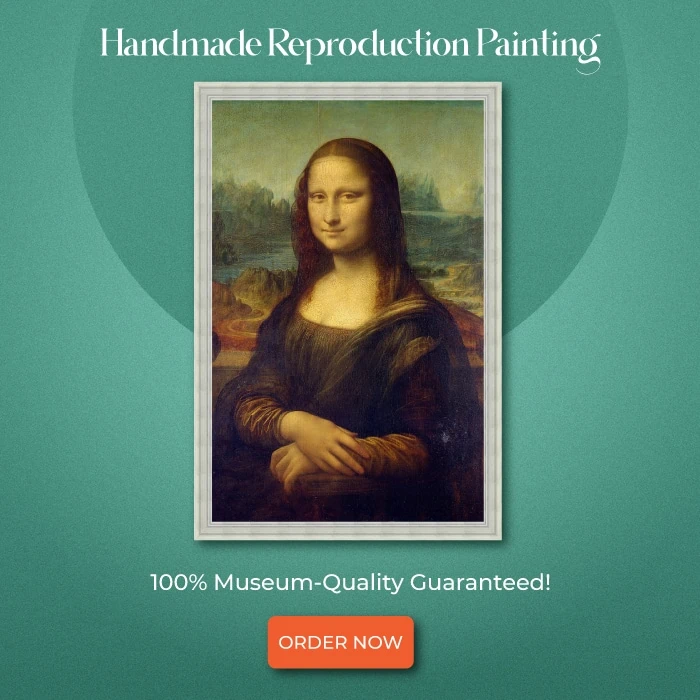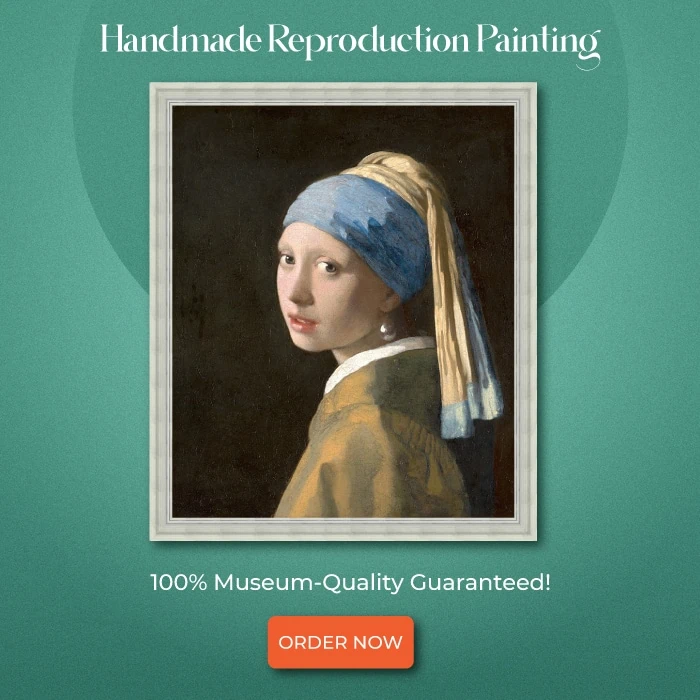The art that you see on the subway, on the street walls, or in parks is nothing but a kind of mural.
Mural art has existed since prehistoric times, and every renowned painter has at least created one or two murals in their lifetime.
As time moved on, murals lost their significance. But due to the occurrence of the Mexican mural movement, artists began showing interest in this form of art, and over the years, the art world saw different kinds of murals, including prominent ones like graffiti.
The way murals are created has changed. Its characteristics and usage changed. But this art still holds potential to shake the system and express artist’ views to the masses.
Many students enjoy painting murals, and for those seeking additional academic support to free up time for art, at Ukwritings you can get trusted services for your essays in UK.
Mural art can do a lot. But what exactly is mural painting? When was the first mural painting created? Or what significance does mural art play in the history of paintings?
To learn about the history and relevancy of mural paintings in ancient and modern times, PortraitFlip presents you with this blog “What is a mural and its existence?”
Let’s dive in.
Table of contents
What is Mural Painting?

Mural painting or artwork is made on a permanent surface; it could be your ceiling, wall, or plastered area.
Countless artists have created mural artworks; the most famous artists among them being Michelangelo and Leonardo da Vinci.

The Creation of Adam is arguably the most famous mural work, created at the Sistine Chapel in the early 16th century.
Mural art has existed since prehistoric times. That means lives in ancient times used to create murals to express themselves or to communicate with their peers.
In today’s world, Mural art holds a little different meaning. Surprisingly, it was seen as a kind of art until Mexican mural movement took place in the 1920s.
But what exactly happened in Mexico? And what led to the formation of the Mexican Mural Movement?
Mexican Mural Movement
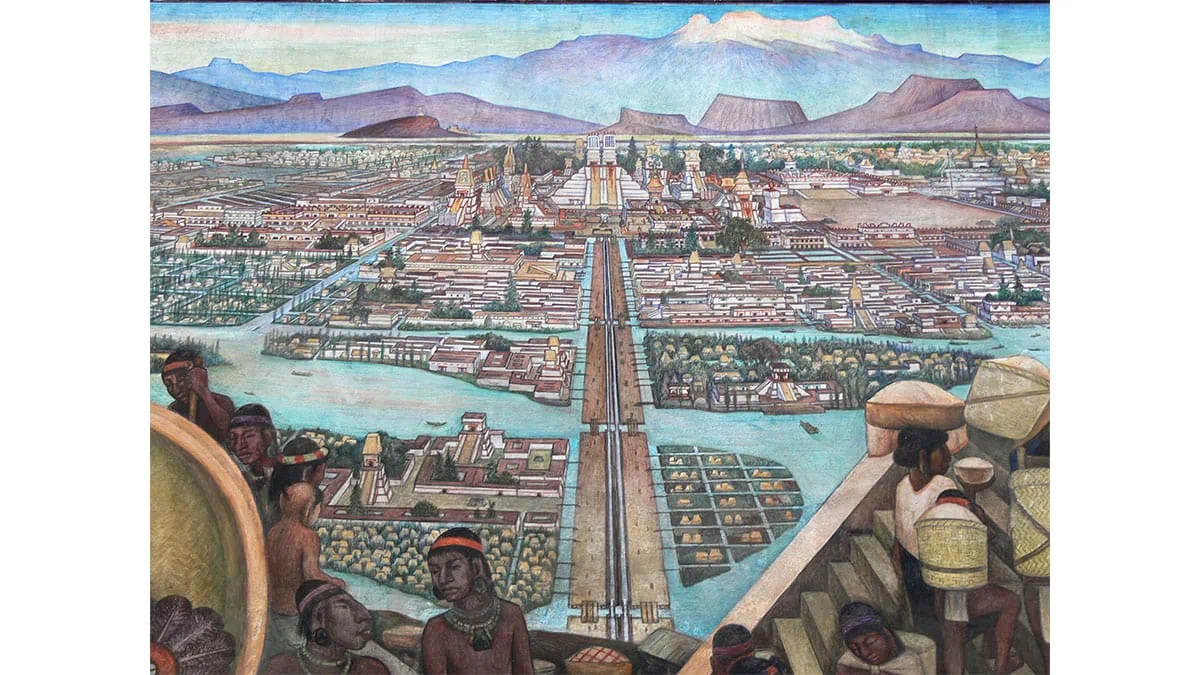
The Mexican Mural Movement began with the thought of educating the masses and promoting historical and cultural values through art.
Mexican artists led the movement to revive nationalism and to make people produce and perceive art the way they wanted.
Spreading a strong social and political message was its goal, but giving the masses access to art helped the movement flourish across the nation in record time.
It was at the beginning of 1910, when people began rebelling against dictatorial and oppressive President Porfirio Diaz.
Which was backed by several known faces, including some of the finest Mexican artists.
This led to a decade long war, with the victory destined for the cultural revolutionaries resulting in the withdrawal of President Diaz.
Which further led to the establishment of a new government that funded the Mexican Mural Movement of 1920.
Artists were allowed to create any form of art; there weren’t any bureaucratic rules to follow.
They were free to explore different art forms and use various painting techniques and styles.
It also enabled artists to produce art on the street so that anyone could view it, which also gave artists the exposure they were looking for.
The movement, which began in 1920, was heavily influenced by the manifesto created by painter David Alfaro Siqueiros.

At that time, a large chunk of Mexicans were illiterate, and this movement helped educate people and disseminate social and political values that allowed individuals, especially artists, to express their viewpoint on any issue.
Today, what we see in the street—glamorous decorations and eye-catching depictions of various personalities—was actually a result of Mexican Muralism, which happened in 1920.
In the 16th century, Renaissance artists like Michelangelo and Leonardo da Vinci made some of the finest mural artworks.
But the spark of creating murals perished after the deaths of these famous personalities, which was revived in 1920, when Mexican muralism happened.
A special thanks to Mexican painters José Clemente Orozco, Diego Rivera, and David Alfaro Siqueiros, who supported the movement, brought fresh talents on board, and unified the social and political ideas of Mexico.
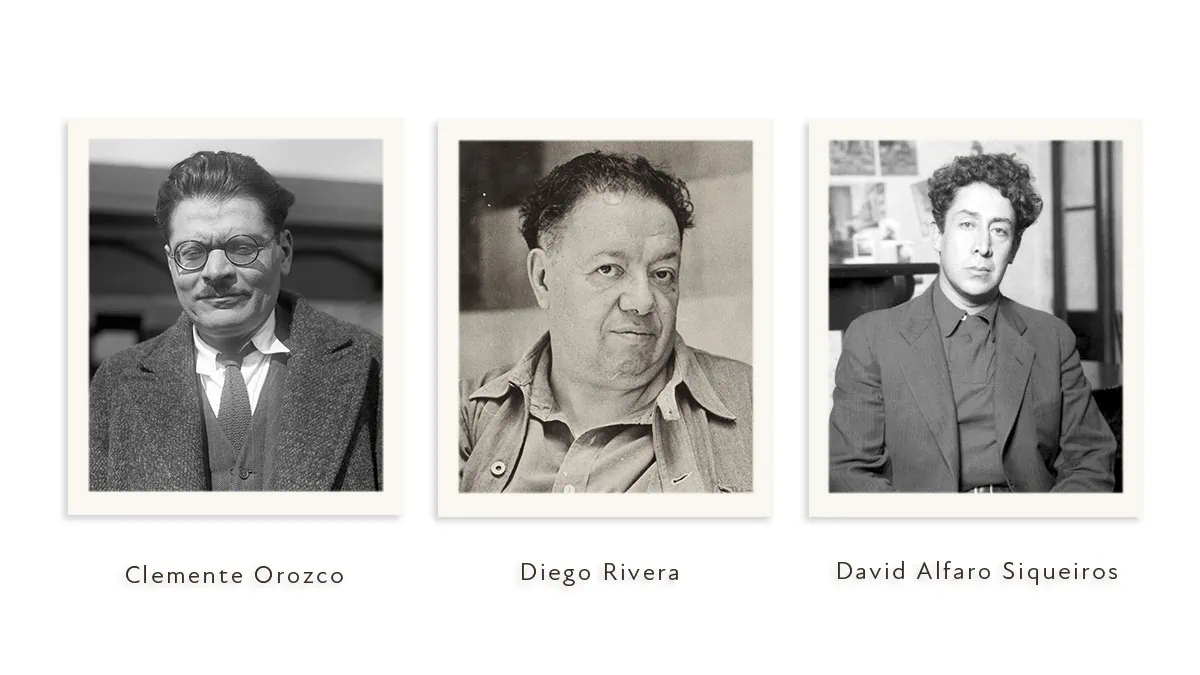
Their works would contain the great importance of unity, freedom, and optimism, and their message swiftly reached from one door to another.
Diego Rivera, the spouse of Frida Kahlo, never fought war with the Mexican Government of 1910, unlike José Clemente Orozco and David Alfaro Siqueiros.
But he condemned the government’s behavior and supported the Mexican Mural Movement through his art from Europe, where he was moved for some personal reasons.
This explanation takes me to the next part, i.e., History of Mural Paintings 😀
(Also Read: 14 Frida Kahlo Paintings)
History of Mural Paintings

It is perhaps next to impossible to declare the accurate date when Murals came into existence, but it was said that Murals existed for a long time, i.e., prehistoric times
Murals were found in different parts of the world, from South America to Asia, dating back to Upper Paleolithic times in the form of cave paintings.
Earlier, ancient civilizations would scratch, carve, and etch to communicate with their people; their activities and behavior became so precious that we could learn what and how they used to survive.
These murals depicted everyday activities and scenes representing cultural and religious aspects at that point.
But as humanity progressed, Murals saw transitions. Earlier, it was made with whatever materials were available, but later, people began considering it as a type of art that resulted in the use of paints and water solvents to create it.
Artists would get funds to have murals made for royal palaces, historical monuments, religious places, and houses of affluents.
As time moved on, murals lost their significance, which lasted for the next few centuries, but they reestablished their position in the Mexican Mural Movement.
In today’s time, mural art can be anywhere—from subways to streets to monuments to religious places.
(Also Read: Famous Paintings Of Jesus)
Mural Wall Painting Techniques
Mural art was all the rage, especially in the early 16th century.
Its popularity grew massively in various art periods, especially in the Renaissance art period, with the support of Italian painters Michelangelo and Leonardo da Vinci.
It was a medium for the socio-political influence. But it was not as the same as it was when the first murals were discovered.
It saw a shift in its characteristics, style, and use; from large walls to street walls, mural art saw dramatic change.
You can identify the differences and understand the evolution of murals by looking at the different murals produced over the centuries.
Fresco Murals

Fresco is the most celebrated mural making technique that has existed since ancient times.
But it got its recognition in the 16th century, when Renaissance artists made use of the fresco technique.
It inspired many contemporary artists as well as being high on durability, and its well preserved masterpieces hold great significance, including Michelangelo’s world famous Sistine Chapel Ceiling.
But what exactly fresco mural is?
It is creation of murals by blending pigments on a thin layer of plaster on the wall or ceiling.
The word “fresco” is derived from the Italian word which means ‘Fresh”.
Although designing frescos was challenging because it required excellent skills and high quality of material.
Fresco, from ancient times, which were found in Egypt, Cret, and Israel, were created to adorn walls and tombs.
But Fresco art cemented its position in renaissance period in which many fresco were created which look appealing and fresh even today.
(Also Read: Best Pop Art Paintings That Shaped The Modern Art)
Graffiti Murals

Whether you consider graffiti art or crime, it became popular in America in the 1960s.
With the fall of European art, American art and culture gained momentum and produced various known American artists, who then produced different kinds of art, including graffiti murals.
But what exactly is a graffiti mural?
It’s a type of mural art that is said to have appeared in Philadelphia in the early 1960s.
Many Americans, at that point, considered it vandalism rather than a piece of work. Graffiti was massively misunderstood, as it was used to convey strong social and political messages.
People would write their names, tags, or slogans; it was perceived to bring down the system and act rebellious, hampering the peace.
But graffiti murals do exist to make a positive impact.
Graffiti is street art that is often created in an unethical and unorganized manner. But it can convey strong and necessary messages and is widely appreciated by general audiences.
(Also Read: 10 Controversial Artworks)
Digital Murals
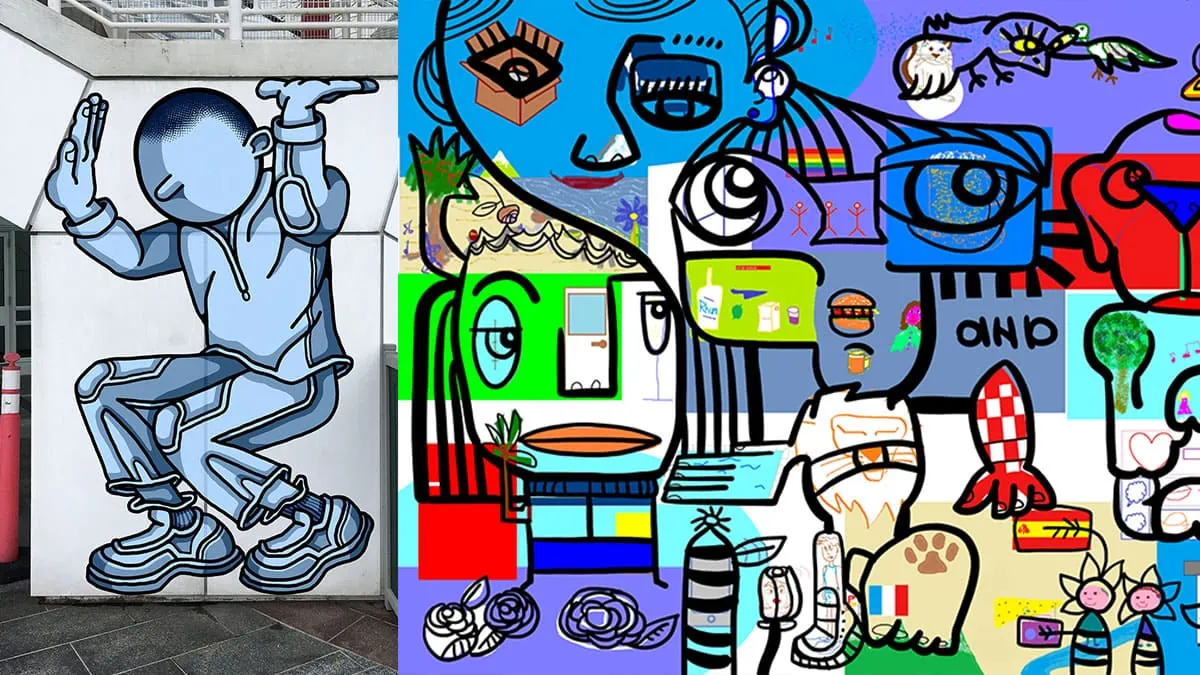
Digital art is a result of advancements in modern technology.
Hand-created murals are replaced by digitally printed murals because they produce as accurate images as mural art does.
Also, they’re convenient to create capturing similar essence and replicate the original form.
That shows why most people moved to digital art because they want to save their time and seek perfection.
Because to create digital mural prints you don’t need proper arrangements just like traditional painters. Also people are far busier than they were in the old times.
Of course, it was mostly commissioned by clients and one works according to their needs. If a mural is not created in appropriate size, will it ever fit where the client wants?
The size plays an important role in mural art as nobody will appreciate it if it doesn’t fit.
(Also Read: Traditional Art vs. Digital Art)
Importance of Mural Paintings
Murals are imperative in society and existed for centuries for various reasons.
It showed us how ancient life looked like. It showed different activities and scenes of prehistoric times.
Apart from that, it holds great importance in the world for the following reasons.
- Adds depth, vibrancy, colors, and meaning to the wall
- Upgrades the aesthetics and vibe of a specific environment
- Acts as a communication tool and unifies one’s socio-political thoughts and ideas
- Lets artists demonstrate their views, express their thoughts and point out societal issues
- Brings art to general populace
- Alters one’s views when placed in a region one work, travels, or passes by everyday
- Ignites one’s curiosity and feeds one’s creativity
- Serves as a mean to preserve moments, celebrate victories, and cover real life events
Every mural art made in olden times was to leave marks, evidence, and proof of their own existence.
Also to communicate with others because they didn’t have any technology to do so.
With time, its use and demand changed, and art patrons, royal families, and the government began funding famous artists to create mural artwork.
Either to decorate their palaces or to spread propaganda, influencing masses and controlling the system.
Famous Mural Examples
Through murals, many artists shared their views on certain scenarios, which led to dramatic changes in society and cultural activities.
Over hundreds of mural artworks were created, which acted as artistic statements and united people during turbulent times.
Here are those iconic mural paintings that influenced people to make society a better place.
1. We the Youth
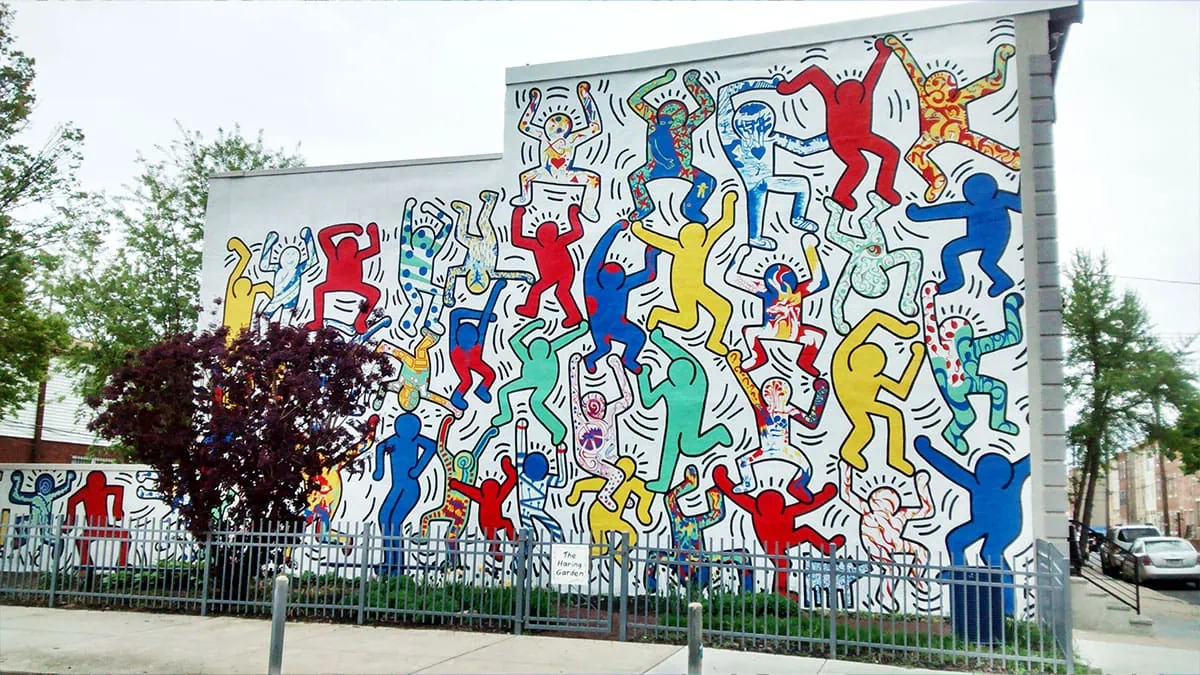
One of the most famous mural artworks, “We The Youth” was created by Keith Haring.
Its characteristics are colorful and vibrant, and it features different elements of art, i.e., symbols, colors, and patterns, in such a way that it shows 14 high school students from New York and Philadelphia dancing and posing.
The mural art was created in 1987 and covers the front and back halves of a rowhouse and a portion of a fence.
It was made for a temporary purpose, but nobody ever asked to move it or discard it, because of which it is still in its original place.
| Date | 1935 |
| Creator | Keith Haring |
| Location | Philadelphia |
| Type | Graffiti |
2. My God, Help Me to Survive This Deadly Love

Berlin wall murals are widely known. But this modern mural art created history and also attracted negative attention.
It’s graffiti art depicting Leonid Brezhnev and Erich Honecker in a socialist fraternal kiss, recreating the scene of a picture taken in 1979 during the 30th anniversary celebration of the foundation of the German Democratic Republic.
The Berlin Wall separated the world into two, whereas the painting shows immense love between two characters, one German and the other Russian.
It is the most talked about mural art because of its tone, characters, and location.
| Date | 1935 |
| Creator | Dmitri Vrubel |
| Location | East Side Gallery, Berlin |
| Type | Graffiti |
3. The History of Mexico
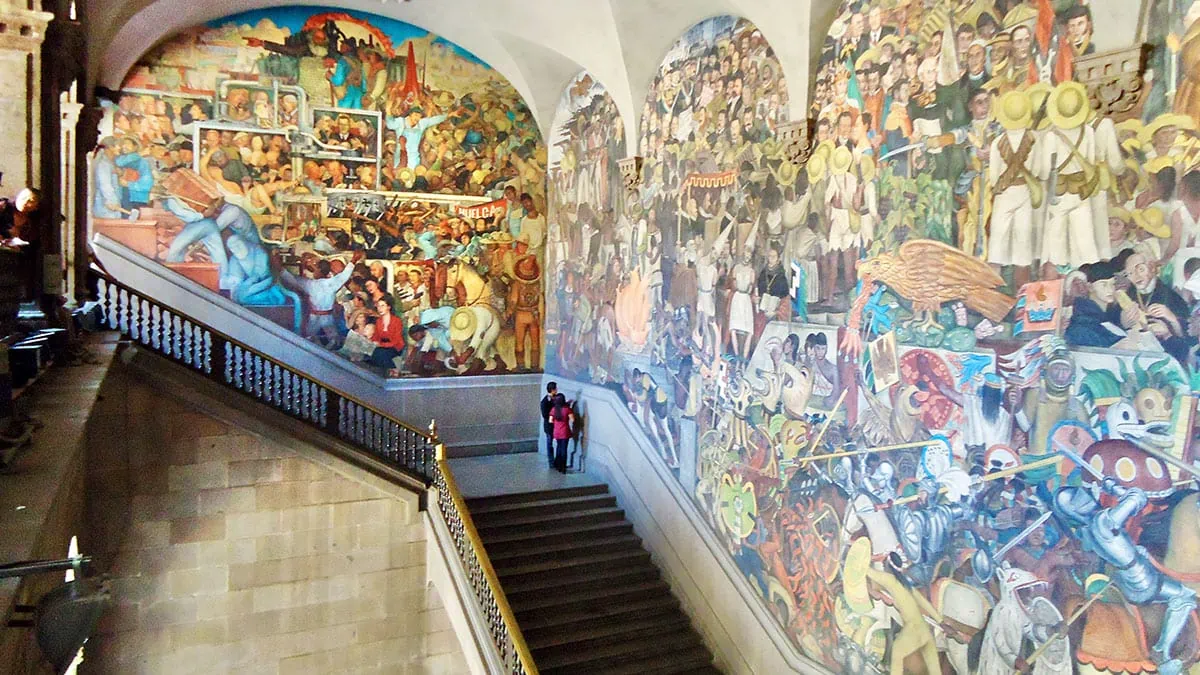
The iconic mural artwork displays Mexico’s history from antiquity to the present.
How the Mexicans fought and won the long battle against Spanish, French, and Tyrants, who controlled them at different stage of life
The fall of President Diaz and the formation of a new government helped Mexicans in various ways.
Mexican artists gained support and love across the nation and its nearby countries.
This famous mural painting is a testament to Mexico’s iconic triumph, which was created by Diego Rivera.
| Date | 1935 |
| Creator | Diego Rivera |
| Location | Mexico City, Mexico |
| Type | Fresco |
(Also Read: 21 Contemporary Black Artists)
Final Note
Mural art is something that has existed for centuries and is still relevant in today’s world.
Although we saw a change in its purpose, its popularity never stopped reaching new heights.
From fresco to graffiti, mural art became famous in no time, especially after the Mexican Mural Movement.
Some artists even built their fortune and reputation by producing murals.
Ever heard of Jean Michel Basquiat?
He played a key role in America’s New York graffiti movement. Although he died at a very young age, he created a platform for his fellow black artists and is also a known figure of Harlem Renaissance.
Last but not least, if José Clemente Orozco, Diego Rivera, and David Alfaro Siqueiros hadn’t led the Mexican Murals from the front, mural art wouldn’t have found its relevancy in modern art.
Frequently Asked Questions
Mural painting or artwork is made on a permanent surface; it could be your ceiling, wall, or plastered area. The art is made to convey a message or show friction, celebration, or thoughts on certain people or issues.
Leonardo Da Vinci and Michelangelo were the famous muralists of the 16th century.
The objective behind it was to revive nationalism and make people produce and perceive art the way they wanted.
Fresco, graffiti, and digital murals are the three main types of murals.




